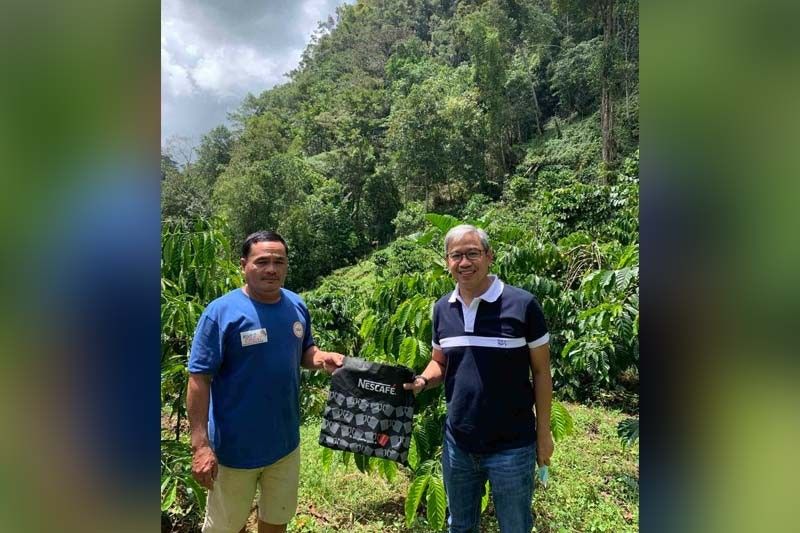We need regenerative agriculture to mitigate climate change, future-proof farms

Global warming from human activity is increasingly driving climate change, arguably the greatest threat to our survival today. Already, we are experiencing its frightening, even life-threatening results, including more destructive weather patterns, hotter temperatures; rising sea levels endangering low-lying land; higher disease incidence; and decreasing agricultural and food output. The consequences can only worsen if we do not act now and with utmost urgency to mitigate climate change. We have no choice.
As the world’s largest food and beverage (F&B) maker, Nestlé’s chips are all on the table, as it were, with a commitment to tackle climate change across our entire business. Guided by an environmental roadmap, Nestlé is implementing critical measures to achieve net zero greenhouse gas (GHG) emissions by 2050, in support of a Paris Agreement target to limit global temperature rise to 1.5 degrees Celsius this century.
At Nestlé Philippines, we focus on a range of climate change initiatives in our operations with which we can deliver maximum impact. Two examples:
A comprehensive approach to plastic, a major source of GHGs that itself has caused a separate environmental crisis. Our upstream - downstream strategy involves developing packaging alternatives and reducing, avoiding plastic use; collecting plastic waste equal to or exceeding the amounts in our packaging; educating some 11 million schoolchildren, their parents, and teachers on solid waste management; and involving consumers in whole-of-society efforts on plastic waste;
We have shifted to renewable electricity at our Makati administrative office, our four factories in Luzon, the Nestlé Business Services facility in Bulacan, and are working for a similar transition at our factory in Mindanao. For years, all our factories have consistently reduced the use of energy and other resources, cutting GHG emissions and costs.
Agriculture, the World Bank says, is a major part of the climate problem, generating 19 to 29 percent of GHGs globally. Conversely, agriculture is highly vulnerable to climate change, as seen in declining crop yields. Substantial investments in adapting to climate change, the World Bank notes, will be required so that agricultural output and food quality can meet demand adequately.
The source of our raw materials, agriculture, is intertwined with Nestlé value chains. And so, we have a responsibility to do all that is feasible to help maintain, enhance, and safeguard agricultural performance.

We are propagating regenerative agriculture as the best course towards mitigating climate change in the agricultural sector. Simultaneously, it improves the climate resilience of farming, also restoring, even enhancing nature’s ability to yield bountiful, good food. Regenerative agriculture is a way of farming to reverse the effects of climate change by improving soil health and restoring degraded biodiversity. Building systemic crop health, it also reduces carbon emissions and improves water systems, creating an ecosystem with more plant and animal varieties able to thrive. Most importantly, it mitigates the adverse effects on the planet of food production, and helps boost livelihoods and increase food security, allowing farmers to grow nutritious food in coming years.
As the country’s biggest buyer of Robusta coffee beans, Nestlé Philippines through the NESCAFÉ Plan works closely with coffee farmers and their communities to sustainably increase their yields, incomes, and quality of life beyond subsistence levels. We collaborate with the national government, LGUs, development agencies, and other partners to promote a regenerative agriculture model that protects key resources: soil, water, and biodiversity.
Fostering economic viability in coffee farming, the NESCAFÉ Plan seeks to support farmers in transitioning from sustainability to regeneration. We share coffee Good Agricultural Practices, with regenerative farming principles that will help make coffee-growing more viable. This is a crucial step in strengthening coffee farming against climate change. With our global direction to take an active role in building large-scale regenerative food systems, we have introduced regenerative agriculture to Filipino coffee farmers. We are disseminating four doable practices: (1) planting cover crops; (2) using compost; (3) practicing agroforestry; and (4) engaging in intercropping. These methods work in synergy to preserve and reinvigorate farming resources. Talking with farmers and looking into existing practices in Mindanao where most of the country’s coffee is grown, I see how regenerative agriculture can positively impact long term productivity.
For Nestlé Philippines, regenerative agriculture is indispensable and will make the difference in coffee farming. In fact, it can considerably benefit the country’s whole agriculture sector, as it grapples with climate change and various aspects of food security, such as domestic crop shortfalls. Hopefully, more businesses involved in local agriculture and food production will take up the cause of regenerative agriculture to mitigate climate change and promote farm resilience. Transitioning from current farm practices is challenging, requiring commitment, knowledge, and resources. But it can and must be done.
- Latest






























